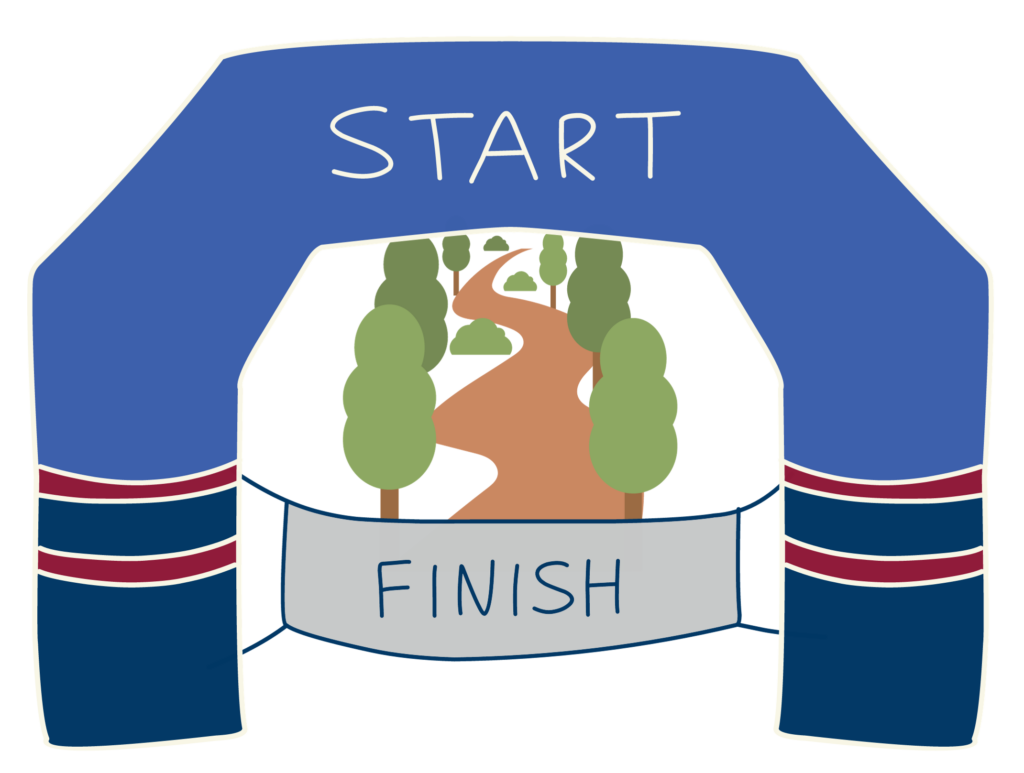
Often when business owners think about transitioning out of business ownership, they focus on numbers and logistics first but don't always consider what they will do after transitioning out of ownership. We’re talking about the big ‘what’s next?’ question that almost all of us face at some point in our careers, and the reaction business owners have seems to fall into one of two camps. While some are ready to transition at any moment that the opportunity arises, others may delay preparation in fear of the unknown.
One place to start is to define what the finish line looks like. Is the finish line simply the closing on the sale transaction? Securing the legacy of the business into the future? Or, what if the finish line also serves as a starting line for all the things the future holds, representing the quality time spent during the rest of the business owner’s lifetime?
During the years of business ownership, the owner gets up most days with his/her life clearly defined—get to work and do what’s needed for the business. This typically involves plenty of interaction with people such as employees, customers, vendors, advisors. For most, the business represents the vast majority of their livelihood and net worth—so no question that time spent at work feels, and is, important. If the business becomes an integral part of the owner’s identity, it will take significant time and planning to determine how to separate from the business and define future activities. For many, defining the future means finding something else enjoyable to do.
Now that CapVal’s Jane Tereba is a Certified Exit Planning Advisor (CEPA) we’ve been having even more of these types of conversations with owners, as well as during our weekly team meetings. Recently we talked internally about the topic of business owners struggling with ‘what’s next after the sale,’ and thought it might be helpful to get another perspective from Nathan Brinkman, founder and President of Triumph Wealth Management. Nathan’s firm provides business owners with a process designed to achieve the most effective and efficient business ownership transition. We knew he would have experience in witnessing both success and challenge in the ‘what’s next’ department.


It can be difficult to carve out the time to process the concept of retirement and succession. Nathan’s overall advice to business owners is to identify a clear vision of the ideal outcome for them, and give it enough time to actually create, and implement, the plan. For some people, hobbies have already been established in recent years (Pickleball anyone?), family lives close enough to see on a regular basis, and the thought of retirement is positive because it means more time to focus on existing enjoyable activities outside of the business. However, based on Nathan’s input, far more often considering what’s next is quite challenging for business owners because most aspects of the owner’s life are tightly intertwined with the business. The emotional impact of separating from the business is difficult. AND complicated.
Defining the ‘what’s next’ phase is what Nathan’s team facilitates, utilizing several readiness tools that can make all the difference to work towards a positive business ownership transition experience. Nathan summarized some key thoughts to share:
- Commit appropriate time and resources for the process – Selling a business is a big deal. There are the “numbers” and "terms" to figure out but there is also the “what’s next” to plan and implement.
- It is important to know yourself—your values and your priorities. If you are married or partnered, it’s even more complicated as you need to align with them also.
- Know your numbers and stress test them—understand the value of the business and what you need financially to live your desired lifestyle for the remainder of your life.
- Go discover the “next” project in your life. That way you will have something to look forward to. Better yet, begin letting go of work activities now by delegating to others (which, as we’ve shared, can increase the value of your company), and spend time developing these interests.
- Learn from others who have successfully transitioned—ask for help. Humans are programmed to help one another but….
- Don’t get distracted by the crazy stories. There is always someone exaggerating about selling their business for a crazy multiple, in cash, in 24 hours. NOT realistic.
One more consideration to add -- we often remind business owners that ownership transition does not need to be all or nothing. There are different scenarios that can facilitate a transition over time, if that is best for all involved. For some people that can make a huge difference in a successful exit, and for others it’s better to fully transfer all ownership in a single transaction. Again, the option of transitioning out of ownership incrementally requires having enough time to do so.
Nathan shared an important closing thought—to successfully transition ownership three things need to align:
- 1. the business owner must be ready;
- 2. the business must be ready; and,
- 3. the market has to be ready.
It is rare to have all three in alignment and a business owner can technically only control the first two of these variables. Investing time today enables the owner to be positioned to take advantage of an optimal deal when the market timing IS ripe and the business owner is ready to cross that finish/starting line to enjoy what’s next.
If you would like to discuss a specific business situation please reach out to us through our Contact page or call us at 608-257-2757 and one of us would be happy to talk through your situation.

